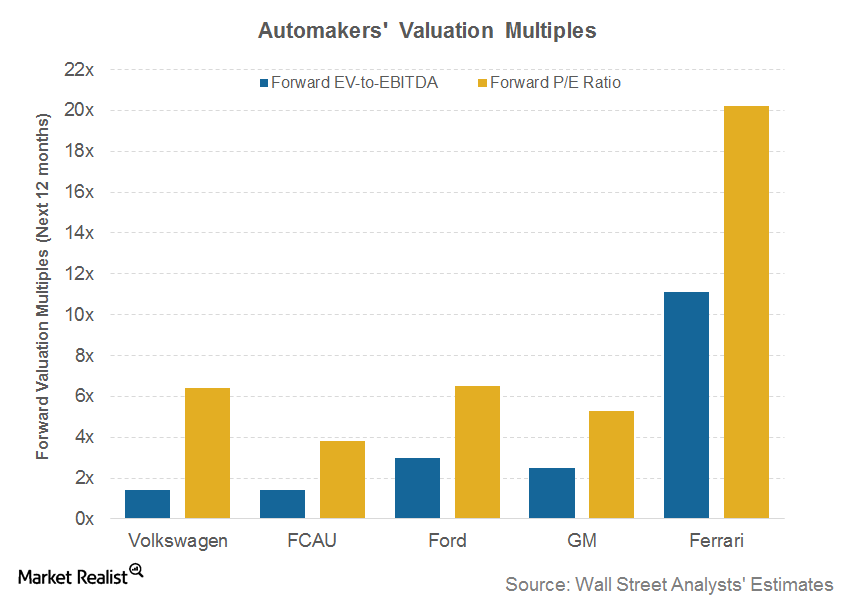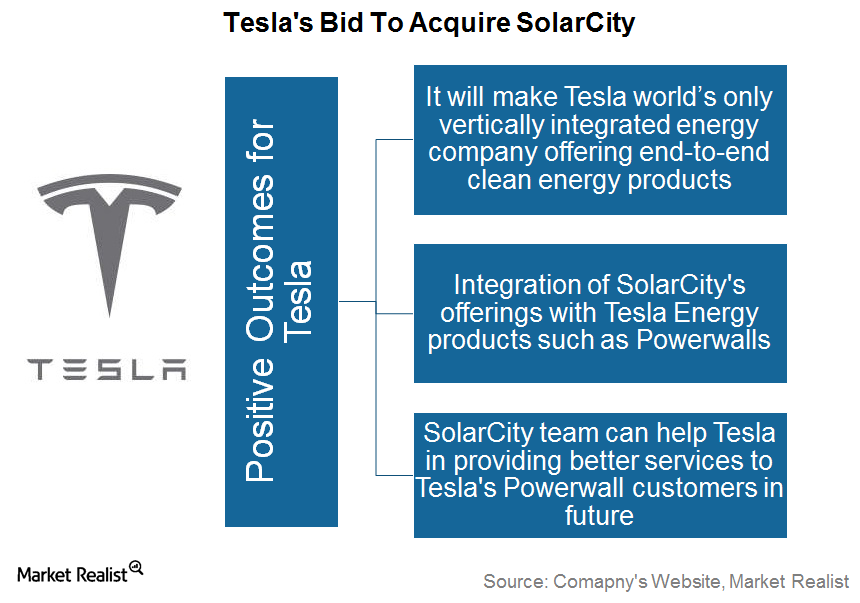
Jitendra Parashar
Jitendra Parashar joined Market Realist in 2015 from a financial markets research background. He covered automobile and tech companies as well as macro developments. His focus areas included artificial intelligence and autonomy, electric cars, and tech innovations. Jitendra has a bachelor's degree in journalism and a master's degree in business administration (MBA) in finance and international business.
Disclosure: I am in full compliance with all ethics and other policies for Market Realist research analysts. I am not invested in securities that I cover on Market Realist.
More From Jitendra Parashar

Fiat Chrysler’s European Sales Rose in January 2018
In January 2018, Fiat Chrysler Automobiles’ (FCAU) total European sales reached ~85,000 vehicle units.
Comparing China and US Vehicle Sales in January 2018
In January 2018, total US auto sales rose about 1.0% YoY to 1.15 million vehicle units, reflecting a slower growth rate than China.
Why Couldn’t Ford Perform Well in Europe in 4Q17?
The company’s revenues from its largest market rose, but it couldn’t manage to post a stronger profitability from the region in the fourth quarter last year.
Fiat Chrysler Stock Began 2018 with a Bang after a Solid 2017
Last week, Fiat Chrysler stock (FCAU) continued to soar and posted solid weekly gains of 7.4%.
Why Toyota’s US Sales Continued to Drop in December 2017
In December 2017, Toyota Motor (TM), the largest Japanese automaker, reported an 8.3% year-over-year (or YoY) decrease in its US sales volume to 222,985 units.
Analyzing General Motors’ Falling Revenues in 2017
In the third quarter of 2017, General Motors’ revenues stood at $33.6 billion, demonstrating a massive drop of 13.5% compared to $38.9 billion in 3Q17.
Key Factors Impacted Ford’s Profit Margins
In 1Q17, Ford reported a gross profit margin of 10.3%. It reflected weakness compared to the gross margin of 14.1% in the same quarter the previous year.
How Toyota’s Profit Margins Trended in Fiscal 2Q18
In fiscal 2Q18, Toyota reported a flat operating margin of 7.3% compared to 7.3% in the same quarter the previous year.
Key Support and Resistance in Tesla Stock after Its 3Q17 Results
The majority of analysts are suggesting a “hold” on Tesla at the moment.
What Do Analysts Recommend for Honda Motor in October 2017?
According to analysts’ consensus data, 41% of analysts covering Honda Motor Company (HMC) gave it a “buy” recommendation on October 11.
Why Many Analysts Aren’t Positive on Ford in October 2017
According to data compiled by Reuters as of October 11, 25% of analysts covering Ford (F) stock have given it a “buy” recommendation.
Here’s What Ford F-Series August Sales Mean for Investors
In August 2017, Ford Motor’s (F) F-Series truck US sales were 77,007 units with a handsome rise of 15.0% on a YoY (year-over-year) basis.
Analysts’ Recommendations for Toyota in August 2017
Toyota Toyota (TM) is the second-largest auto manufacturer in the world after Volkswagen (VLKAY), according to 2016 global auto sales data. In 2008, Toyota became the world’s largest automaker by volume, despite being founded much later than legacy US auto giants (IYK) General Motors (GM) and Ford Motor (F). Recommendations on Toyota According to recent data […]
Comparing Mainstream Automakers’ 2Q17 Profit Margins
In 2Q17, General Motors’ (GM) adjusted EBIT (earnings before interest and taxes) stood at 3.7 billion. The company’s EBIT margin was 10.0% for the quarter.
Why Toyota’s Fiscal 2017 Revenues Fell
In the calendar year 2016, Toyota (TM) stood as the second-largest automaker by volume in the world after Volkswagen (VLKAY).
Why Is Tesla’s Association with Panasonic Important?
Tesla’s agreement with Panasonic for the solar energy business made it clear that their association isn’t just limited to cells and battery manufacturing.
How the Recent Rise in Oil Prices Could Affect the Auto Industry
In November 2016, the WTI (West Texas Intermediate) crude oil prices traded on a bullish note after witnessing a 2.9% rise in the previous month.
Comparing General Motors and Ford’s Huge Pension Obligations
In the last six years, Ford contributed ~$12.9 billion to its pension funds. It’s the main reason why it has a better-funded status than General Motors.
What Different Pension Plans Do Automakers Offer?
Defined benefit plans are one of the oldest types of post-retirement benefit plans that automakers offer to their employees.
Analyzing Tesla’s Updated Energy Products
In October, Tesla unveiled the second version of the Powerwall and Powerpack. The second version comes with higher energy storage capacity.
Are Ford’s Falling Retail and Fleet Sales a Reason for Concern?
In August 2016, Ford reported a ~8% YoY (year-over-year) decline in its home market total sales. The company only managed to sell ~14,000 units.
Is Ford Maintaining the Right Balance between Retail and Fleet Sales?
In July 2016, Ford’s fleet sales rose by 6% YoY to 55,321 units, whereas its retail vehicle sales fell by 6% YoY to 161,158 units.
Analyzing Ferrari’s Valuation Multiples ahead of 2Q16 Earnings
As of July 18, 2016, Ferrari’s (RACE) forward EV-to-EBITDA multiple is 11.1x. Ferrari’s forward PE (price-to-earnings) multiple is trading at 20.2x.
What Drove General Motors’ Revenues Higher in 2Q16?
In 2Q16, General Motors’ (GM) revenues came in at $42.4 billion. This reflects an increase of 11.1% over $38.2 billion in the corresponding quarter of the previous year.
Can Ford Sustain Its Revenue Growth?
In 1Q16, Ford (F) reported an 11.3% year-over-year (or YoY) rise in its global revenue, which was $37.7 billion compared to $33.9 billion in 2Q15.
Understanding Zipcar’s Business Model
Founded in 2000, Zipcar was one of the car-sharing industry’s early entrants.
Why Tesla’s SolarCity Acquisition Could Pay Off
According to Tesla’s (TSLA) SolarCity acquisition proposal, it’s ready to pay $26.50 to $28.50 per share for SolarCity.
Auto Industry Indicators: What Do Recent Vehicle Sales Data Suggest?
The US auto industry has witnessed good times in the past couple of years. In 2015, US auto sales were at their highest, with 17.4 million vehicles sold.
An Investor’s Guide to Honda’s Valuation
On June 10, 2016, Honda had a forward EV-to-EBITDA multiple of 3.2x for the next 12 months.
Analyzing Recent Trends in Honda’s Revenue
In fiscal 2016, Honda reported strong revenues of ~1.5 trillion Japanese yen, which is 9.6% higher than its revenues of ~1.3 trillion yen in fiscal 2015.
How Has Honda’s Marketing Strategy Helped It Grow?
Honda (HMC) markets its products through an extensive sales network in the US. This network comprises ~1,040 independent local dealers for motorcycles, ~1,310 for automobiles, and ~8,200 for power products.
Understanding Honda’s Financial Services Business
In fiscal 2016, Honda’s Financial Services’s net revenues stood at 1.8 trillion Japanese yen. This is 18% higher than its fiscal 2015 revenues of 1.5 trillion yen.
Honda Motor Company: Understanding Key Business Segments
By revenue, Honda’s Automobile segment is the company’s largest division. In fiscal 2016, ~73% of the company’s total revenues came from the Automobile segment.
What Are the Key Markets for Honda Motor Company?
Honda’s sales from Japan have been declining lately due to slowing auto demand in the region. In fiscal 2016, 12% of the company’s total revenues were from its home market, much lower than 19% in fiscal 2012.
Overview: The Beginning of Honda Motor Company
Honda Motor Company (HMC) is the second-largest Japanese automaker after Toyota and the world’s largest internal combustion engine manufacturer by volume. This series will help auto investors to become familiar with the key aspects of Honda’s business before investing in its stock and ADRs.
A Look at Toyota’s Key Leverage Ratios
At the end of most recent reported quarter, Toyota’s interest coverage ratio was 80.6x. This is far better than the GM’s interest coverage ratio of 15.6x and Ford’s ratio of 14.1x.
Toyota’s Financial Services Segment and Its Automotive Business
In the last five fiscal years, Toyota’s Financial Services’s revenues have grown by 73%. Rising revenues for the TFS segment reflects optimism in Toyota’s overall sales pattern.
Understanding Toyota’s Marketing Strategy
Toyota (TM) has become one of the top ten biggest advertising spenders in the US. The company spent 435 billion Japanese yen, or 1.6% of its revenues, on advertising and sales promotions during fiscal 2015.
An Investor’s Guide to Toyota’s Valuation
On May 23, 2016, Toyota’s forward PE ratio, based on earnings forecasts for the next 12 months, stood at 8.0x, also much higher than Ford’s 6.2x and GM’s 5.3x.
How Does Toyota Plan to Deal with Its Challenges?
With increasing environmental awareness across the globe, a delay in Toyota’s ability to deliver mainstream eco-friendly vehicles may restrict its future growth prospects.
Analyzing Recent Trends in Toyota’s Revenue
According to a report published by Forbes in May 2015, Toyota was the eighth-largest company in the world by revenue. The company is not directly listed in the US, although its ADR is traded on the NYSE.
What Are the Key Markets for Toyota Motor Corporation?
Toyota (TM) has 53 overseas manufacturing companies in 28 countries and regions. Originally considered a regional auto manufacturer, Toyota has busted this myth by gaining a huge global market share, particularly in the US and Europe.
How Research and Development Is Important to Toyota’s Business
In fiscal 2016 (April 1, 2015–March 31, 2016), Toyota spent ~3.7% of its revenue, or about 1,055 billion Japanese yen, on its R&D program for its vehicles.
Why Toyota’s Just-in-Time Method Is Critical to Its Success
Toyota began using the Just-in-Time method in 1938. However, the true potential of this strategy was realized when it integrated this strategy with TPS.
How Toyota Became the World’s Largest Automaker
Toyota established its US headquarters in 1982. It expanded into luxury cars in the 1980s, pickup trucks in the 1990s, and hybrids in the 2000s.
Overview: All You Need to Know about Toyota Motor Corporation
In 2015, Toyota ranked 11th on Forbes’s list of the world’s largest companies. This ranking was based on a composite score of the revenues, profits, assets, and market value of various companies.
What Are Harley-Davidson’s Valuation Multiples?
As of March 29, 2016, Harley-Davidson’s forward EV/EBITDA multiple is 11x for the next 12 months.
What Is Harley-Davidson’s Marketing Strategy?
It’s important for investors to take a look at an automaker’s marketing strategy to understand how the company differentiates its strategy to market its offerings.
Could Harley-Davidson’s Electric Motorcycle Be a Reality Soon?
One such innovation that could soon become large in the two wheeler segment is electric motorcycles.
What Factors Could Affect Harley-Davidson’s Profitability?
Last year, currency headwinds stole nearly 4.4% of the company’s total revenues, which resulted in an unfavorable impact on Harley-Davidson’s profitability and margins.
